The Middle East, and North Africa region has undergoing a tremendous shift politically and socially due to multiple revolutions, civil and international wars, and threats to longstanding institutional power structures.
My personal history as a naturalized United States citizen of the Iraqi-Palestinian Diasporas has bound me to an inescapable relationship with such issues. By employing my position/identity/self, I infiltrate and confront spaces in which control and domination are the status quo. My work challenges predictable attitudes towards the power dynamics between the strong and the weak, shaping new possibilities for consideration.

Courtesy of Sama Alshaibi and Ayyam Gallery (Beirut, Dubai) © All Rights Reserved
Between Two Rivers
In Between Two Rivers, I re-empower the image of the Iraqi women, who were subjugated to the ‘selling of the war’ by imperial forces to their citizens in Western nations. Tribal tattoos, scarification and traditional Iraqi identity markers are subverted to speak about the once proud cradle of civilization.
The notion that women in Iraq, who once enjoyed the greatest freedoms of the Arab world, would be liberated by war under the guise of democracy is countered. Through the means of inscribing Iraq’s great historical legacy onto my own body through the language of violence and suffering, I reshape the conversation of what was lost to this new reality.
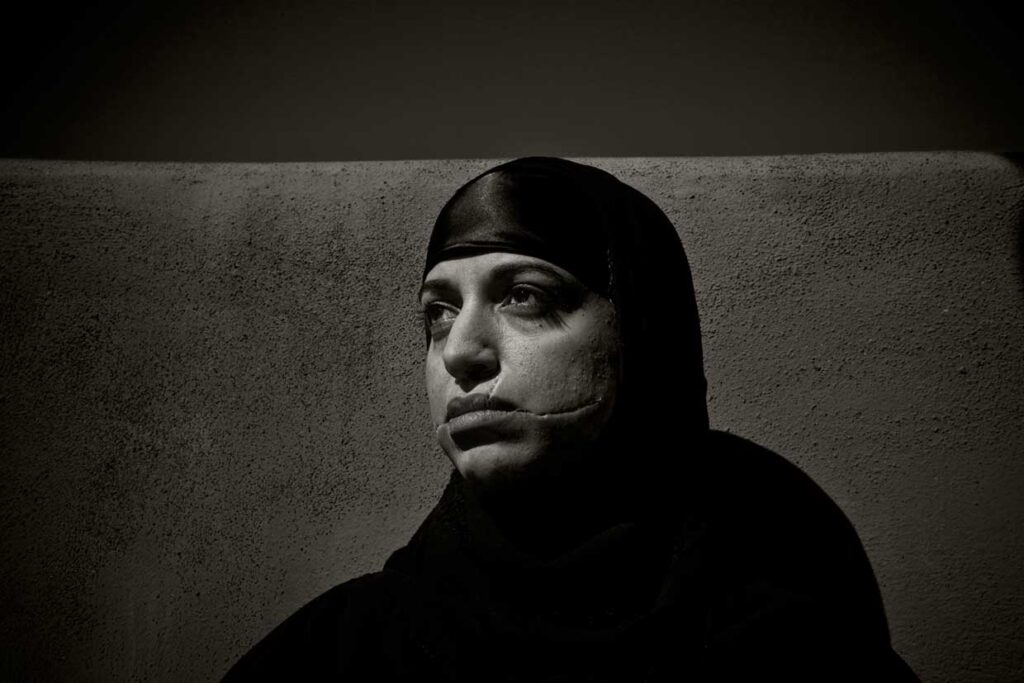
Courtesy of Sama Alshaibi and Ayyam Gallery (Beirut, Dubai) © All Rights Reserved
I mirror the language of violence and terror by physically altering my body and face through special effects cosmetics.
I was inspired by my people who resist ‘vultures’ (persons who prey on the dead) on the streets of Iraq.
Vultures deceive the family members of the bombing victims; they call the family of the deceased announcing they have kidnapped their loved ones. Desperate, and existing within a government vacuum, families pay the large ransom.
Only then do the vultures callously reveal the kidnapping is a farce. Many Iraqis have taken to tattoos and scarification, demanding the vultures state what their loved one’s hidden mark is before paying. It is a powerful form of resistance; it renegotiates power through the markers of injury through a just and defensible means.
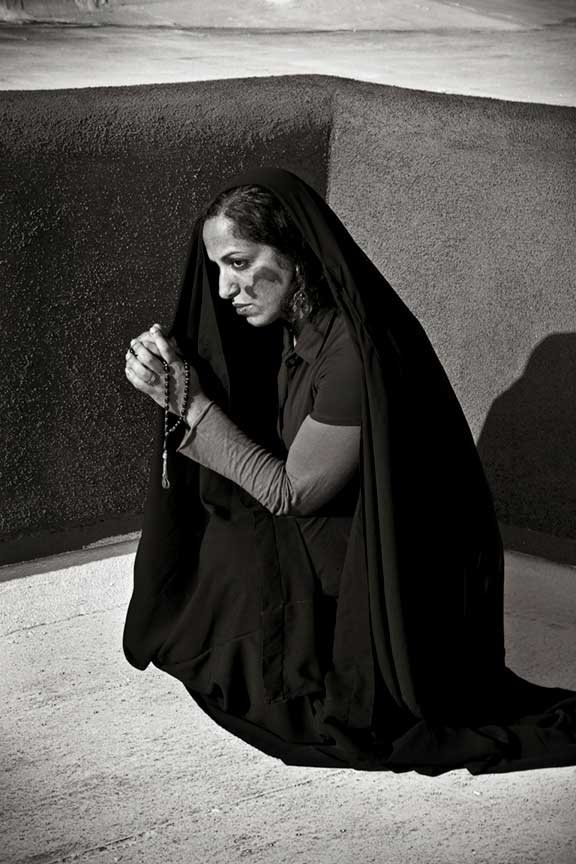
Courtesy of Sama Alshaibi and Ayyam Gallery (Beirut, Dubai) © All Rights Reserved
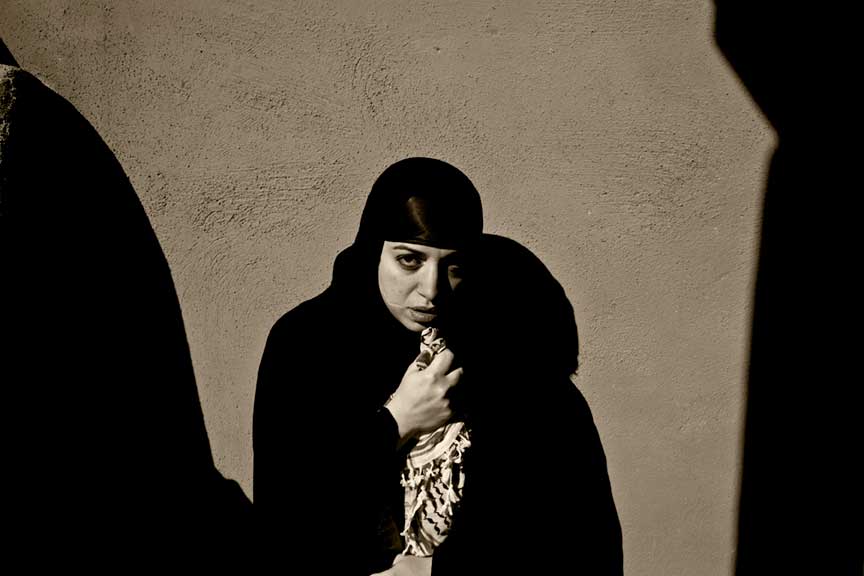
Courtesy of Sama Alshaibi and Ayyam Gallery (Beirut, Dubai) © All Rights Reserved
As the project grew in scope, my photographs also tackled similar injustices preyed upon the people (in particular to women) by the civil and international war.
The barbed wire-barricaded landscape of Iraq is represented by a severing gash across both of my cheeks; the hyper-mediated imagery of a once proud moment in contemporary Iraqi history, the purple stained fingers for the first democratic vote in 2005 on the fingers of Iraqi women, is now reflected as a gushing wound on my index finger.
The shape of the Fertile Crescent is presented as a birthmark or branding on my cheek. And other images converge the markings of historical pride and contemporary peril, such as the evoking one of Iraq’s most famous landmarks, the Malwiya Minaret.
The structure is evoked in large cascading welts across my neck, as if a layered strangulation marks. It is dedicated to a woman in Iraq who on death row, a monumental scapegoat in the dysfunctional Iraqi government and system.
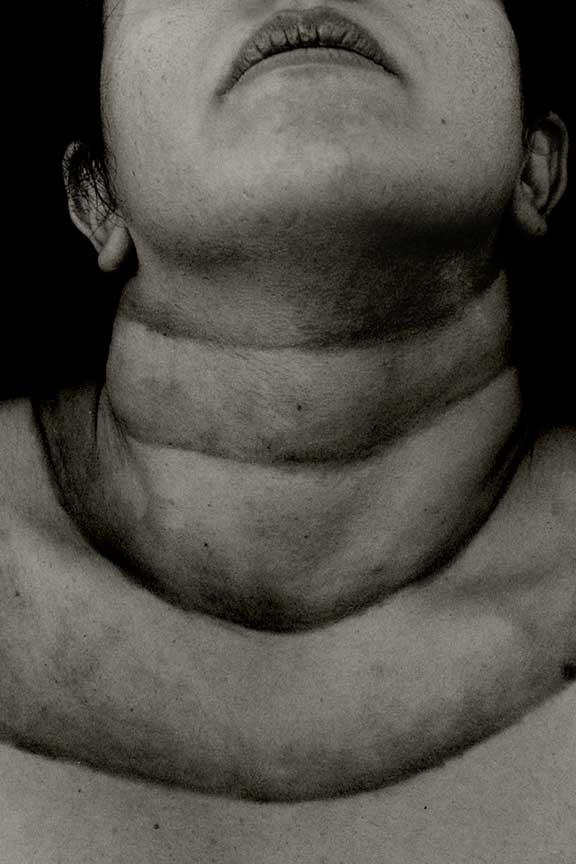
Courtesy of Sama Alshaibi and Ayyam Gallery (Beirut, Dubai) © All Rights Reserved
Sama Alshaibi
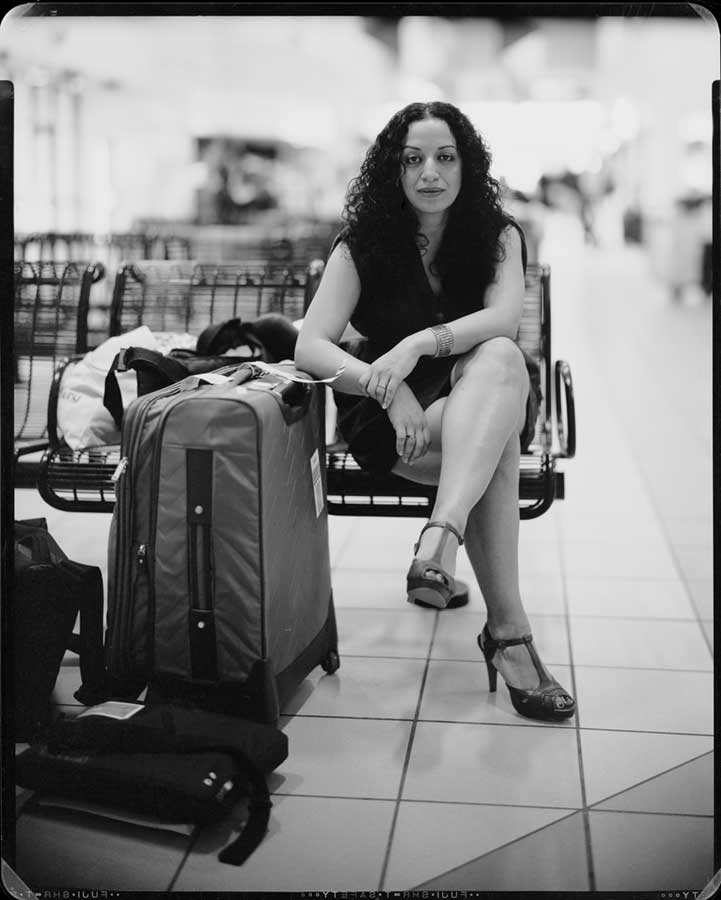
Sama Alshaibi is a multi-media artist born in 1973 (Basra, Iraq) to an Iraqi father and Palestinian mother and is now a naturalized US citizen. Sama Alshaibi’s artwork explores the body, and spaces of conflict in the aftermath of war and exile. Alshaibi’s monograph, Sand Rushes In (New York: Aperture, 2015) presents her Silsila series, which probes the human dimensions of migration, borders, and environmental demise. Silsila was exhibited at the 55th Venice Biennale, 2017 Honolulu Biennial, Qalandia International Biennial (Haifa), American University Museum (Washington D.C.), SMoCA (Arizona), Marta Herford Museum (Germany) and Johnson Museum of Art (Cornell University, NY).
Her exhibitions also include the 13th Cairo Biennale (Egypt), MoMA (NY), Bronx Museum (NYC), Arab American National Museum (Michigan), Pen +Brush (NYC), and Ayyam Gallery (UK/UAE). Recently, her new project “Carry Over” was awarded first prize in the category “Project Development Award” by the Center (Santa Fe, 2019). She also received an artist residency at Artpace (San Antonio, 2019), an Arizona Commission on the Arts Grant in 2018,
a Visual Arts Grant from Arab Fund for
Arts and Culture (Beirut, 2017), and was awarded a US Fulbright Scholar Fellowship to the West Bank (Palestine, 2014-2015). Her work has been featured in Photo District News, L’Oile de la Photographie, Lensculture, NY Times, Ibraaz, Blouin Artinfo, Contact Sheet, Harpar’s Bazaar, The Guardian, CNN, Huffington Post and Hysteria. Alshaibi was named University of Arizona’s 1885 Distinguished Scholar, where she is Professor of Photography, Video and Imaging. Alshaibi is represented by Ayyam Gallery (Dubai, Beirut).

